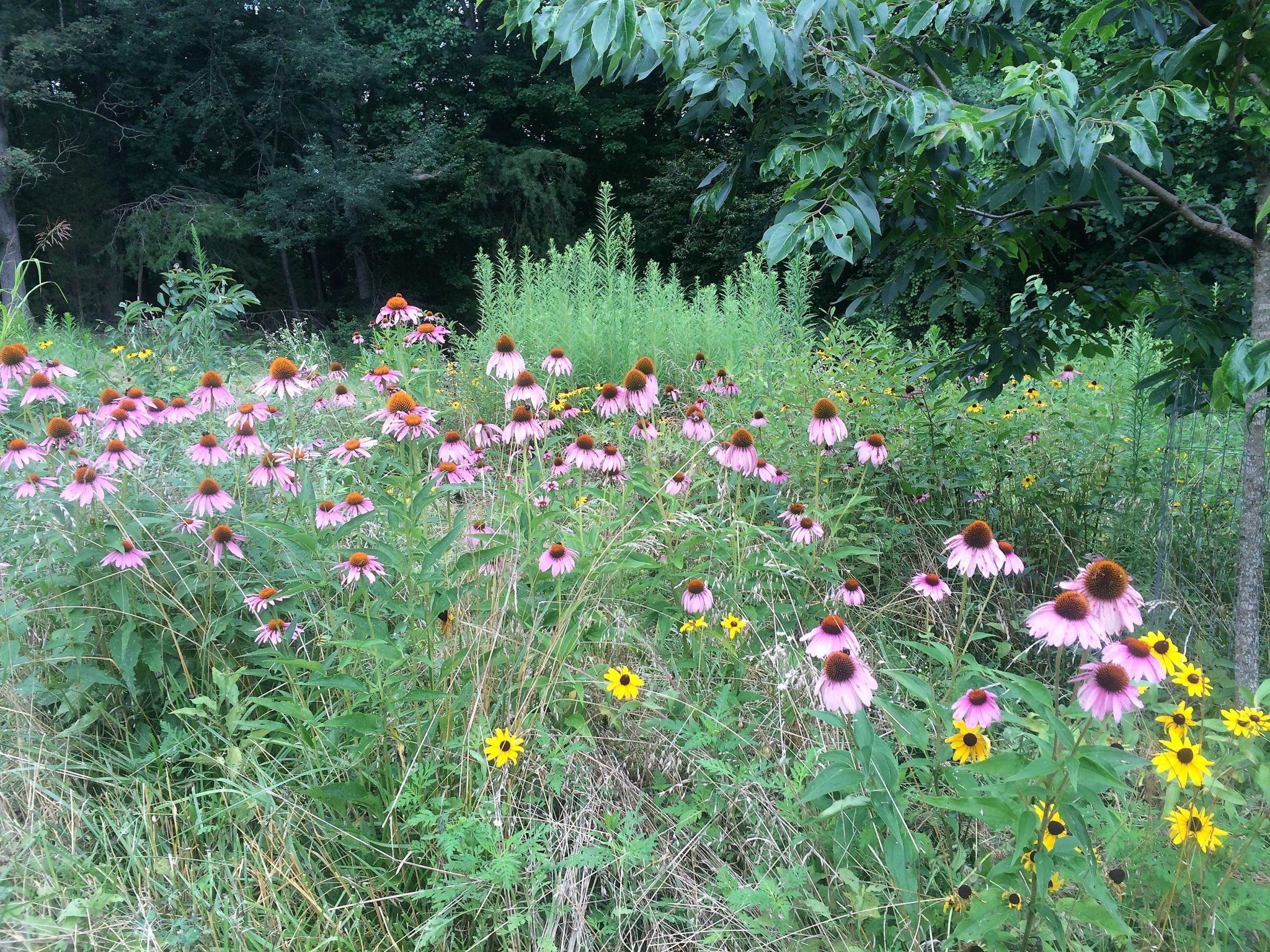If you’ve looked at the Biology website you’ve probably noticed we’re serious about designing and installing sustainable gardens. We’re also strong advocates of using native plants whenever possible. So it might be fitting in this inaugural article to explain these ideals a bit further while dispelling a few myths.
As passionate as I am about using native plants I will be the first to tell you that planting native does not always equate to sustainable gardening. We use many nonnative plants in our gardens. Sustainable gardens use a variety of cultural practices, plants, mulches, hardscape features and management strategies to minimize maintenance and encourage longevity of the garden. Many of our native plants simply aren’t well suited for the microclimates within our modern landscapes. For instance a Red Maple or Dogwood most likely will not perform well planted in a parking lot island or next to a hot south facing wall. If they do survive they will probably require more water and be more prone to pest. As in real estate, consider location, location, location, when choosing plants. Careful plant selection is just one critical piece to sustainable gardening.
Another misconception is that native plantings look wild and untamed. Of course they can, but they can be used in any garden style or setting from formal to very natural. With the many smaller native cultivars now available there is a native plant for almost every situation.
Many times I’ve had a client say to me, “I want a maintenance free garden.” Those really do not exist. However, careful planning and sustainable garden practices go a long way toward reducing maintenance.
Now that these myths have been dispelled consider why it’s important to be sustainable and to plant native. As for sustainability, it just makes sense to use resources wisely. Think about it this way-if you’re maintaining your own garden wouldn’t you rather have shrubs that grow nicely into a size and shape that fit the space rather than spend those hot summer days shearing them? Personally, I’d rather be fishing or doing just about anything else. And if you’re paying to have your landscape maintained wouldn’t you rather spend that money set aside for trimming on something else?
Regarding planting native, Douglass Tallamy says in his book Bringing Nature Home that our native insects have evolved to feed on native plants and that those insects are a critical link in the food web for much of our wildlife. If you shudder at the thought of insects, relax, we’re not talking Biblical plagues. Nature has a way of maintaining a balance. Unfortunately, most of our commonly used landscape plants are nonnative. If you like seeing Gold Finches, butterflies and other creatures in the garden include native plants. My experience is, if you plant it they will come.
I hope this article has been helpful at removing some of the mystery surrounding sustainable gardening and native plants. The principles really are very simple and can be applied to any landscape or garden. I encourage you to consider this when planning your next garden project.
David Davis
Owner, Biology Garden Design & Landscaping
*** See the North Carolina Native Plant Society and the Audubon Society websites below for a list of native plant recommendations.

